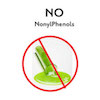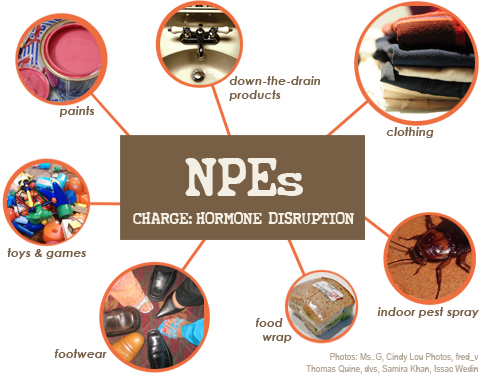


Nonylphenol Phenol

Avoid Nonylphenol Phenol
Alkylphenols
Alkylphenols are used in industry manufacture soap, soap powders and more. Alkylphenols are industrial chemicals used in the production of detergents and other cleaning products. They're also found in personal care products, especially hair products, and are an active component in many spermicides. Alkylphenols are endocrine disruptors that have been shown to alter mammary gland development in rats. Environmental endocrine disruptors, xenoestrogens, contribute to decreased sperm counts, sterility, and reproductive tumors.
Phenols
Nonylphenols, Alkylphenols, and Phenols are endocrine disruptors and xenoestrogens. It has the potential for liver kidney cyst growth. These act like true estrogen within the human body however these chemicals are not true estrogen. They are chemicals that mimic the structure of estrogen, the chemical structure, the molecular structure. These act like estrogen and are taken into the body as hormones causing reproductive cancers, difficulties with reproduction and any cells that have hormonal receptors within their cells, these endocrine disruptors stimulate their growth. Liver cysts have hormonal receptors within their cell walls.
Source of Nonylphenols
Diet seems the most significant source of nonylphenol exposure. It is found in water, water run off, sewage. It is found in chemicals used for cleaning. Alkyl phenolic compounds are concentrated by organisms such as fish and birds, leading to contamination in their internal organs between ten and several thousand times greater than in the surrounding environment. Nonylphenol is found in wastewater. Alkyl phenol and nonylphenol are potent endocrine disruptors. Countries in the European Union are preparing to ban their use.
Phenoxyethanol
Phenoxyethanol is used as a preservative in cosmetic products and also as a stabilizer in perfumes and soaps. Exposure to phenoxyethanol has been linked to reactions ranging from eczema to severe, life-threatening allergic reactions. Infant oral exposure to phenoxyethanol can acutely affect nervous system function.
Present in: Moisturizer, eye shadow, foundation, sunscreen, conditioner, mascara, eye liner, shampoo, lip gloss, concealer, body wash, hand cream, blush, hair color, hair spray, lip balm, lotion, nail polish, baby wipes, baby lotions and soaps, soap (liquid and bar), shaving cream, deodorant, toothpaste, fragrance, hair removal waxes, hand sanitizer and ultrasound gel.
Detergents
Detergents inhaling powders goes directly to the diaphragm and to the liver. Try using a mask or a liquid or a compressed and encased as compressed tablets. Alkylphenols nonylphenol are industrial chemicals used in the production of detergents and other cleaning products. Nonylphenols, Alkylphenols, and Phenols are endocrine disruptors and xenoestrogens. It has the potential for liver kidney cyst growth.
Breast Milk
One study conducted in Italian women showed that nonylphenol was one of the highest contaminants at a concentration of 32 ng/mL in breast milk when compared to other alkyl phenols. The study also found a positive correlation between fish consumption and the concentration of nonylphenol in breast milk.[26] This is a large problem because breast milk is the main source of nourishment for newborns, who are in early stages of development where hormones are very influential. Elevated levels of endocrine disruptors in breast milk have been associated with negative effects on neurological development, growth, and memory function.
